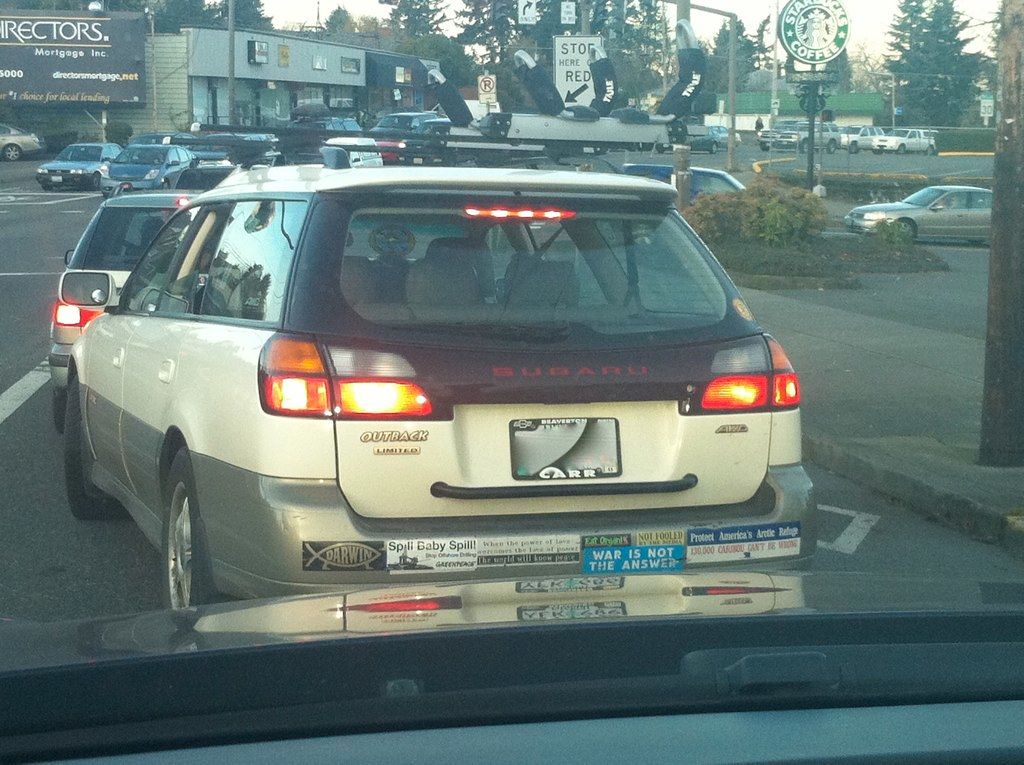
Ever felt a shiver down your spine when a particular car brand pulls up next to you, or just *know* what kind of shenanigans are about to unfold the moment you spot a certain model? You’re not alone! It’s wild how some rides just seem to attract a specific “vibe” behind the wheel, good or bad. While we all know it’s the human, not the machine, making the decisions, there’s no denying that certain cars come with a reputation – and sometimes, the numbers actually back it up!
We’ve all been there, mentally tallying up the “worst drivers” on our daily commutes. Whether it’s the constant speeding, the sudden lane changes without a blinker, or the sheer audacity of certain maneuvers, these moments often seem to be attached to specific vehicle makes and models. These aren’t just random observations; societal patterns, viral videos, and even cold hard data from insurance studies are painting a picture of cars that, for better or worse, have become synonymous with less-than-stellar driving habits.
So, buckle up, because we’re taking a deep dive into some of the most talked-about vehicles that seem to bring out the inner “automotive monster” in their drivers. We’re kicking things off with the cars that are most often associated with aggressive, reckless, and just plain infuriating behavior that makes everyone else on the road collectively groan. Get ready to nod along in agreement, or maybe even argue a little – after all, driver vibes are *very* real.
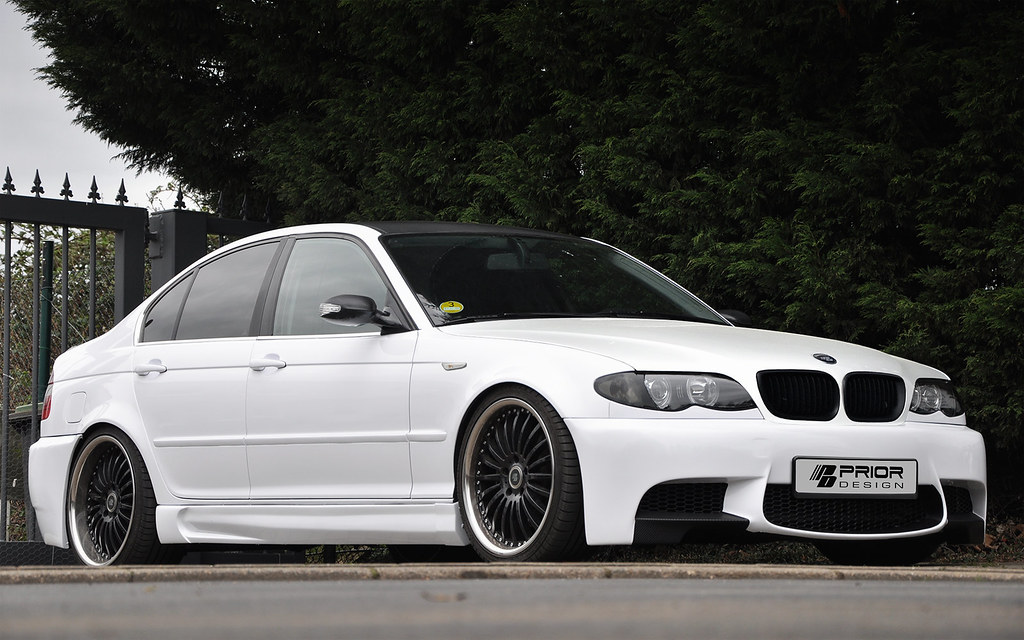
1. **BMW 3 Series**Ah, the BMW 3 Series. If cars had a spirit animal for aggressive driving, this might just be it. It’s not just a perception; this sleek sedan has earned itself the rather telling nickname “left-lane overlord” for a reason. Drivers of the 3 Series are often stereotyped as masters of tailgating, expertly weaving through traffic at speeds that make your head spin.
The 3 Series is famed for its modern handling and sporty appeal, qualities that undoubtedly attract a more assertive type of driver. This translates into a driving style that, while perhaps thrilling for the person behind the wheel, can be a headache for everyone else. Think abrupt lane changes, a general disregard for personal space on the highway, and an almost mythical aversion to using turn signal indicators.
Indeed, the stereotypes are so strong that jokes about “BMW turn signals” have become common folklore among drivers. According to a 2023 Insurify study, BMW as a brand ranks ninth among car brands for speeding tickets, a statistic that, while not exclusive to the 3 Series, certainly doesn’t help its reputation. Love them or hate them, you can bet a 3 Series driver rarely goes unnoticed.
This perception of aggressive behavior isn’t just an isolated incident; it’s a recurring theme in discussions about road etiquette. Drivers of BMWs, and specifically the 3 Series, are frequently blamed for pushing the limits on public roads, turning what should be a smooth commute into an unexpected slalom course. It’s a testament to the car’s performance capabilities, perhaps, but also a reflection of how those capabilities are often exploited.
The sheer frequency with which BMW drivers are cited for these behaviors, whether in formal studies or casual conversations, solidifies its place on this list. It’s a powerful machine, no doubt, but one that seemingly grants its drivers an invisible cloak of urgency, making them feel entitled to every inch of asphalt. The 3 Series, with its blend of luxury and performance, seems to act as a trigger for some motorists to transform into those “automotive monsters” we all dread encountering.
Car Model Information: 2018 Acura MDX 3.5L w/Technology Package
Name: BMW 3 Series
Manufacturer: BMW
Production: 1975–present
Class: Compact executive car
Predecessor: BMW 02 Series
Categories: 1970s cars, 1980s cars, 1990s cars, 2000s cars, 2010s cars
Summary: The BMW 3 series is a line of compact executive cars manufactured by the German automaker BMW since May 1975. It is the successor to the 02 series and has been produced in seven generations.
The first generation of the 3 Series was only available as a 2-door saloon; the model range expanded to include a 4-door saloon, 2-door convertible, 2-door coupé, 5-door estate, 5-door liftback (“Gran Turismo”; discontinued in 2019) and 3-door hatchback body styles. Since 2013, the coupé and convertible models have been marketed as the 4 Series; these styles no longer being included in the 3 Series.
The 3 Series is BMW’s best-selling model line, accounting for around 30% of the BMW brand’s annual total car sales, and has won numerous awards throughout its history. The M version of the 3 series, M3, debuted with the E30 M3 in 1986.
Get more information about: BMW 3 Series
Buying a high-performing used car >>>
Brand: BMW Model: 3 Series
Price: $18,885 Mileage: 131,273 mi.
Read more about: Beyond the Billionaire Bling: An Insider’s Look at Warren Buffett’s 10 Unexpected Car Choices and Driving Philosophies
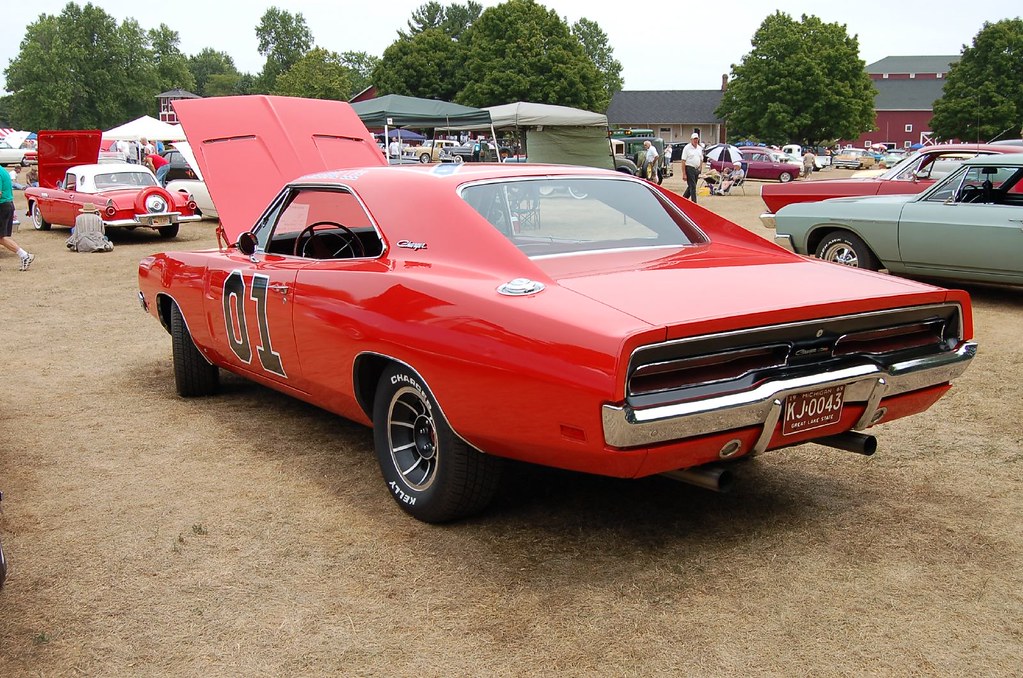
2. **Dodge Charger**When you hear “Dodge Charger,” does your mind immediately jump to the roar of an engine, tires burning rubber, and a distinct whiff of adrenaline? You wouldn’t be wrong. The Charger consistently appears on lists tracking high-speed violations and a variety of risky on-road behaviors. Its deep-rooted connection to street racing culture is hardly a secret, and it’s a reputation it wears quite boldly.
In bustling urban centers like Atlanta and Miami, law enforcement agencies have specifically flagged the Dodge Charger for its disproportionately high rate of illegal maneuver citations. This isn’t just about going fast; it’s about pushing boundaries, engaging in reckless speeding, and turning public roads into what many perceive as a personal racetrack. The sheer horsepower and muscle car aesthetic clearly attract drivers eager to test the limits.
The frustration felt by other motorists when encountering a Charger driver is palpable. Whether it’s being cut off at high speed or witnessing blatant disregard for traffic laws, the Charger’s association with aggressive driving often overshadows any practical attributes the sedan might possess. It’s a powerful vehicle, yes, but that power, in the hands of certain drivers, frequently translates to hazardous actions on the road.
Many people assume that a Charger driver has a “need for speed” mentality, and unfortunately, this often proves true. The sound of its engine alone can be a harbinger of tailgating and aggressive overtaking. This car, more than many others, has cemented its image as a vehicle for those who crave the thrill of pushing their machines—and everyone else’s patience—to the very edge.
The Charger’s image is a potent mix of American muscle and rebellious spirit, which, when combined with a driver looking to make a statement, often results in behavior that can range from irritating to downright dangerous. It’s not just a car; for many, it’s a symbol of unchecked road aggression, leaving a trail of frustrated commuters in its wake.
Car Model Information: 2022 Dodge Charger SXT
Name: Dodge Charger
Caption: 1969 Dodge Charger
Manufacturer: Dodge
Production: 1966–1978,1981–1987,2005–present
ModelYears: 1966–1978,1982–1987,2006–present
Categories: 1960s cars, 1970s cars, 1980s cars, 2000s cars, 2010s cars
Summary: The Dodge Charger is a model of automobile marketed by Dodge in various forms over eight generations since 1966.
The first Charger was a show car in 1964. A 1965 Charger II concept car resembled the 1966 production version.
In the United States, the Charger nameplate has been used on mid-size cars, personal luxury coupes, subcompact hatchbacks, and full-size sedans.
Get more information about: Dodge Charger
Buying a high-performing used car >>>
Brand: Dodge Model: Charger
Price: $19,987 Mileage: 37,151 mi.
Read more about: 12 Cars That Made Drivers Say ‘Nope, Not Again!’ – Your Ultimate Guide to Avoiding Instant Regret on Wheels
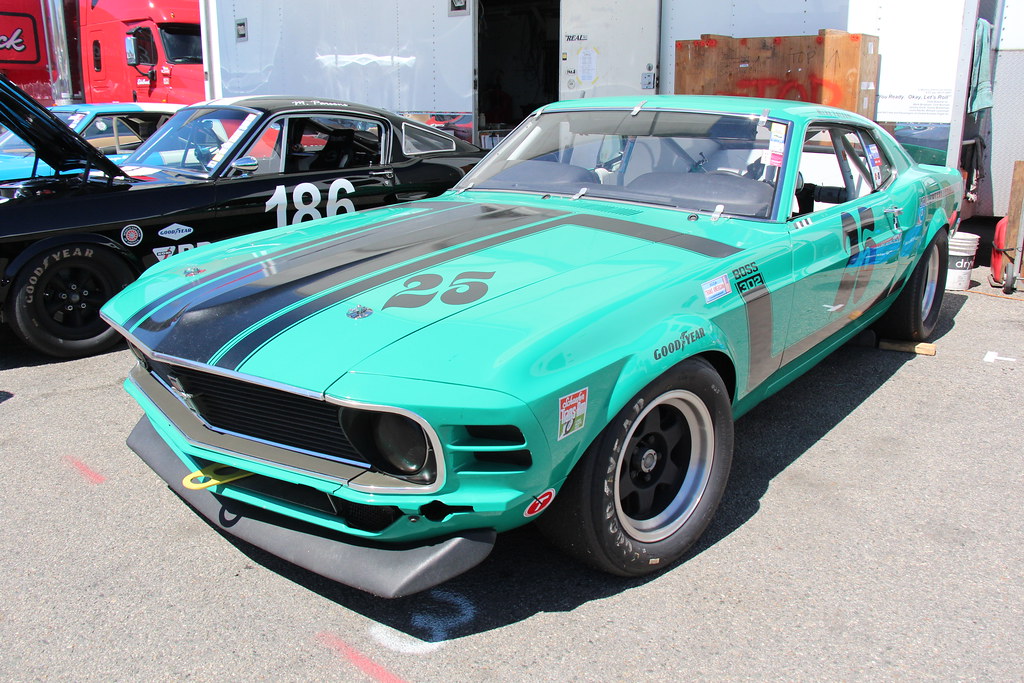
3. **Ford Mustang**The Ford Mustang, an icon of American automotive power and freedom, unfortunately, also carries a heavy burden of notorious driver vibes. There’s almost a running gag in car circles about Mustang clips “drifting out of control near crowds,” and sadly, this isn’t just an exaggeration. Mustangs are frequently involved in crash reports directly tied to amateur stunts and a severe loss of vehicle control.
National safety data points to Mustangs ranking high on the list for incidents related to misjudged acceleration and, perhaps most tellingly, driver overconfidence. The allure of its raw power and sporty design seems to ignite a showboating impulse in some owners, who mistake public thoroughfares for stunt arenas. This often leads to disastrous consequences, vividly captured in viral videos of Mustangs crashing at car meets or losing control in seemingly simple turns.
While countless Mustang owners drive responsibly and enjoy their vehicles for what they are, the actions of a few “bad apples” have undeniably cemented the Mustang’s reputation for dangerous overconfidence. When you hear a Mustang rev loudly next to you at a stoplight, it’s not uncommon for a small red flag to go up in your mind, anticipating a potential display of bravado that could put others at risk.
The emotional connection many drivers have with their Mustang, often seen as an extension of their adventurous spirit, sometimes translates into an inflated sense of driving prowess. This inflated confidence, combined with a powerful rear-wheel-drive setup, can lead to scenarios where the car’s limits are pushed beyond the driver’s skill, resulting in those infamous “Mustang moments.”
This isn’t just about speed; it’s about the spectacle. Mustang drivers, or at least the ones contributing to the stereotype, are often perceived as seeking attention, and are willing to take risks to get it. Whether it’s a burnout attempt that goes wrong or an ill-advised drift around a corner, the Mustang has become a symbol of driving bravado that frequently veers into the territory of recklessness and dangerous over-estimation of skill.
Car Model Information: 2024 Ford Mustang GT Premium
Name: Ford Mustang
Caption: 2024 Ford Mustang GT Convertible
Aka: Ford T5 (Germany)
Manufacturer: Ford Motor Company
Production: March 1964 – present
ModelYears: 1965–present
Class: Unbulleted list
BodyStyle: Unbulleted list
Layout: Front-engine, rear-wheel-drive layout
Categories: 1970s cars, 1980s cars, 1990s cars, 2+2 coupés, 2000s cars
Summary: The Ford Mustang is an American automobile manufactured and marketed by Ford since 1964, as Ford’s longest nameplate in continuous production. Currently in its seventh generation, it is the fifth-best selling Ford car nameplate. The namesake of the “pony car” automobile segment, the Mustang was developed as a highly styled line of sporty coupes and convertibles derived from existing model lines, initially distinguished by its pronounced “long hood, short deck” proportions.
Originally predicted to sell 100,000 vehicles yearly, the 1965 Mustang became the most successful vehicle launch since the 1927 Model A. Introduced on April 17, 1964 (16 days after the Plymouth Barracuda), over 400,000 units were sold in its first year; the one-millionth Mustang was sold within two years of its launch. In August 2018, Ford produced the 10-millionth Mustang; matching the first 1965 Mustang, the vehicle was a 2019 Wimbledon White convertible with a V8 engine.
The success of the Mustang launch led to multiple competitors from other American manufacturers, including the Chevrolet Camaro and Pontiac Firebird (1967), AMC Javelin (1968), and Dodge Challenger (1970). It also competed with the Plymouth Barracuda, which was launched around the same time. The Mustang also had an effect on designs of coupes worldwide, leading to the marketing of the Toyota Celica and Ford Capri in the United States (the latter, by Lincoln-Mercury). The Mercury Cougar was launched in 1967 as a unique-bodied higher-trim alternative to the Mustang; during the 1970s, it included more features and was marketed as a personal luxury car.
From 1965 until 2004, the Mustang shared chassis commonality with other Ford model lines, staying rear-wheel-drive throughout its production. From 1965 to 1973, the Mustang was derived from the 1960 Ford Falcon compact. From 1974 until 1978, the Mustang (denoted Mustang II) was a longer-wheelbase version of the Ford Pinto. From 1979 until 2004, the Mustang shared its Fox platform chassis with 14 other Ford vehicles (becoming the final one to use the Fox architecture). Since 2005, Ford has produced two generations of the Mustang, each using a distinct platform unique to the model line.
Through its production, multiple nameplates have been associated with the Ford Mustang series, including GT, Mach 1, Boss 302/429, Cobra (separate from Shelby Cobra), and Bullitt, along with “5.0” fender badging (denoting 4.9 L OHV or 5.0 L DOHC V8 engines).
Get more information about: Ford Mustang
Buying a high-performing used car >>>
Brand: Ford Model: Mustang
Price: $43,950 Mileage: 19,565 mi.
Read more about: 14 Classic Rides That Boomers Loved But Millennials and Gen Z Just Can’t Stand: Unpacking Why These Iconic Cars Fail to Appeal Now
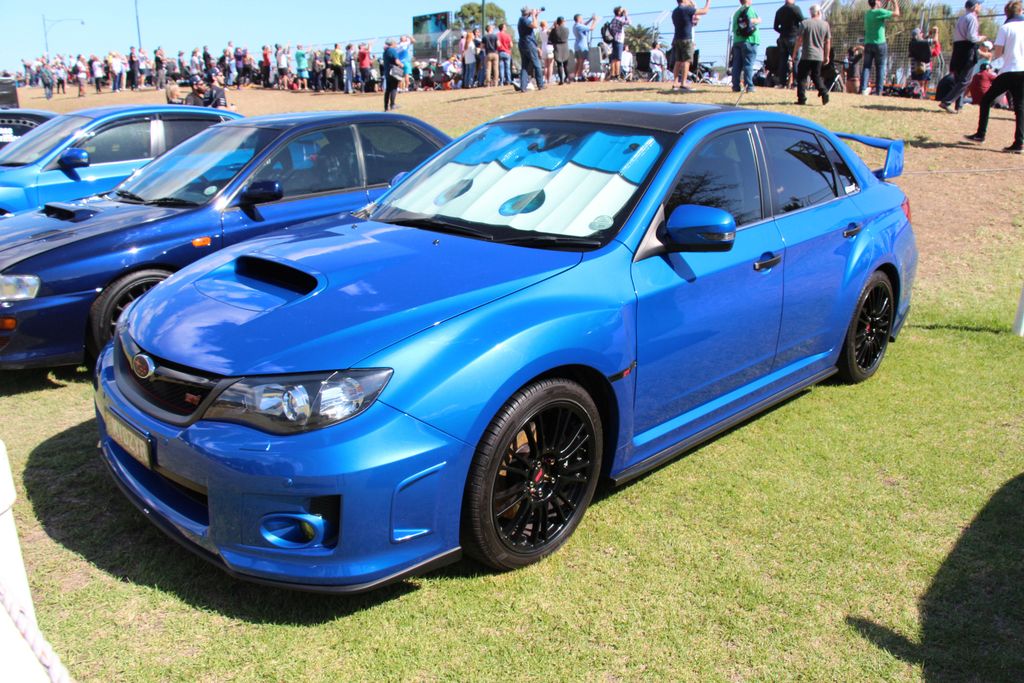
4. **Subaru WRX**For enthusiasts, the Subaru WRX is a rally legend, a car built for sharp handling and spirited performance. But this coupe’s zippy nature and aggressive looks, unfortunately, often come at a cost to other road users’ peace of mind. The WRX has cultivated a reputation for attracting a specific breed of driver: one eager to push the limits, often with little regard for speed limits or road safety.
According to data from Insurify, a staggering 13.6% of Subaru WRX drivers have speeding tickets on their record, a figure that is significantly above the national average. This isn’t just a minor blip; it paints a clear picture of a driver base that has a consistent tendency to indulge in lead-footed behavior. The turbocharged engine and rally heritage seem to act as a siren call for those who view every road as a potential rally stage.
Beyond speeding, there’s a more concerning statistic: the driver fatality rate for the WRX stands at 54, starkly higher than the norm of 36. While these safety concerns stem from insurance-based data rather than federal reports, they highlight a pattern of riskier driving that can have severe consequences. It suggests that the aggressive driving style associated with the WRX isn’t just about minor infractions; it can escalate to more serious incidents.
The “cult following” of the WRX, particularly among younger drivers, often involves a culture of modifying these cars for added power and performance. Anecdotally, this modification culture is frequently tied to an even riskier driving style, where owners feel compelled to test the enhanced capabilities of their vehicles on public roads. Aggressive cornering and rapid acceleration become the norm, not the exception.
When a WRX zips past, onlookers often make an immediate assumption: that the driver is someone actively testing the car’s limits, pushing it as hard as possible. This car, with its unique blend of performance and image, has carved out a niche as a vehicle synonymous with enthusiastic, sometimes overly aggressive, driving that makes its presence known, often to the annoyance or concern of others.
Car Model Information: 2018 Subaru WRX Base
Name: Subaru WRX
Caption: 2022 Subaru WRX GT
Aka: Subaru Impreza WRX (1992–2014)
Production: 1992–2014 (Impreza-based models),2015–present (standalone models)
Assembly: Ōta, Gunma
Layout: Front-engine, four-wheel-drive layout
Manufacturer: Subaru
Related: Subaru Levorg,Subaru WRX STI
Class: Sport compact
BodyStyle: Sedan (automobile)
Categories: 2020s cars, All-wheel-drive vehicles, All articles with unsourced statements, Articles with short description, Articles with unsourced statements from August 2020
Summary: The Subaru WRX is an all-wheel drive sport compact car manufactured by the Japanese automaker Subaru, originally based on the Impreza created for the World Rally Championship in 1992. Subaru claimed the name WRX stands for “World Rally eXperimental”. Starting with the 2015 models, the WRX lineup has been split from the Impreza, with a different body style that is not offered as an optional hatchback/wagon, being introduced as the separate Levorg model.
Get more information about: Subaru WRX
Buying a high-performing used car >>>
Brand: Subaru Model: WRX
Price: $14,980 Mileage: 117,516 mi.
Read more about: The Automotive Hall of Shame: 15 Infamous Rides and Their Reputations for Bad Drivers and Dangerous Flaws
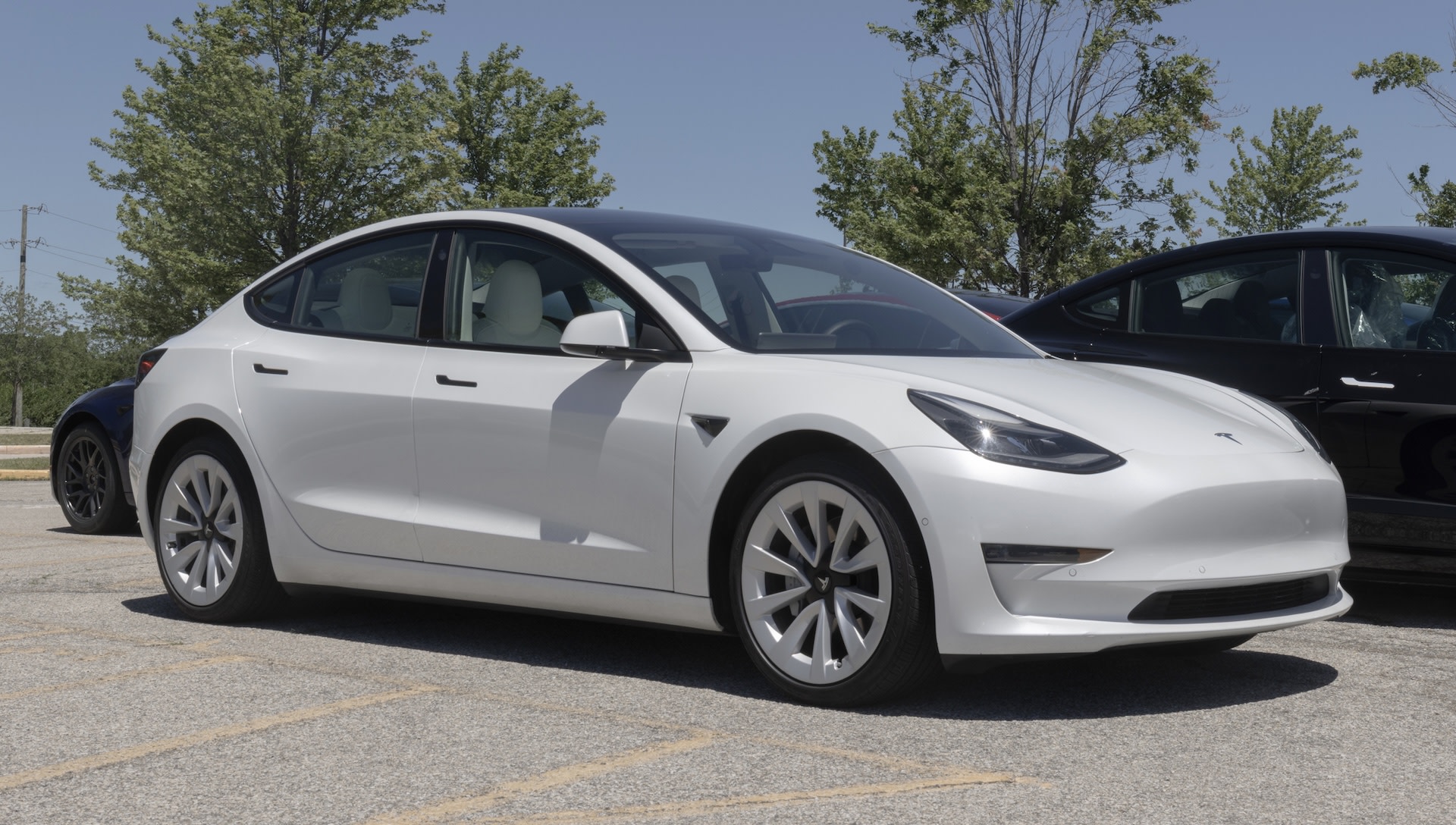
5. **Tesla (Model 3 and overall Tesla drivers)**Tesla vehicles, particularly the Model 3, are celebrated for their advanced technology and groundbreaking electric performance. Yet, despite all the futuristic bells and whistles, these cars are frequently associated with some surprisingly backward driver behavior. The irony is not lost on anyone: advanced technology doesn’t always translate to advanced, or even safe, driver behavior.
One of the most significant concerns revolves around distracted driving, particularly stemming from the misuse of Autopilot and other driver-assist features. There’s a pervasive overconfidence in automation that seems to skew driver results, leading to a false sense of security where drivers become disengaged from the primary task of operating the vehicle. In 2022, the NHTSA launched multiple investigations involving Model 3 crashes that occurred under driver-assist settings, highlighting this critical issue.
Beyond the specific issues with automation, the broader Tesla driver base often gets called out for general road cluelessness. Anecdotal reports from many drivers describe Tesla owners exhibiting a “twitchy and nervous” driving style, characterized by abrupt braking due to regenerative braking and an inability to drive smoothly. It’s almost as if some drivers are overwhelmed by the car’s power and quick responsiveness, leading to hesitant and unpredictable movements.
Moreover, navigational skills, or the lack thereof, are frequently cited frustrations. Many observers note that Tesla drivers often appear not to know where they are going, even with state-of-the-art navigation systems. This uncertainty often manifests as sudden slowdowns on main roads, un-signaled lane changes, and last-minute swerving, all contributing to road hazards and widespread frustration among other motorists.
LendingTree’s QuoteWizard study, which analyzed tens of millions of quote inquiries, surprisingly placed Tesla at the top for 2024, with 36.94 incidents per 1,000 drivers. This includes accidents, DUIs, speeding, and citations. This significant finding underscores that despite their innovative design, Tesla drivers, across various models, are statistically linked to a higher rate of driving incidents, making them a car that undeniably brings out certain “vibes” on the road.
Car Model Information: 2018 Acura MDX 3.5L w/Technology Package
Name: Tesla Model 3
Manufacturer: Tesla, Inc.
Production: 2017–present
Assembly: unbulleted list
Designer: Franz von Holzhausen
Class: Mid-size car
BodyStyle: Sedan (car)
Layout: unbulleted list
Related: Tesla Model Y
Motor: unbulleted list
Transmission: Single-speed fixed (9:1 ratio)
Battery: unbulleted list
ElectricRange: unbulleted list
Charging: unbulleted list
Wheelbase: cvt
Length: unbulleted list
Width: cvt
Height: unbulleted list
Weight: cvt
Caption: 2019 Tesla Model 3 Performance
Categories: 2020s cars, ANCAP large family cars, All-wheel-drive vehicles, All Wikipedia articles in need of updating, All Wikipedia articles written in American English
Summary: The Tesla Model 3 is a battery electric powered mid-size sedan with a fastback body style built by Tesla, Inc., introduced in 2017. The vehicle is marketed as being more affordable to more people than previous models made by Tesla. The Model 3 was the world’s top-selling plug-in electric car for three years, from 2018 to 2020, before the Tesla Model Y, a crossover SUV based on the Model 3 chassis, took the top spot. In June 2021, the Model 3 became the first electric car to pass global sales of 1 million.
A facelifted Model 3 with revamped interior and exterior styling was introduced in late 2023 for countries supplied by Gigafactory Shanghai and in early 2024 in North America and other countries supplied by the Tesla Fremont Factory.
Get more information about: Tesla Model 3
Buying a high-performing used car >>>
Brand: Tesla Model: Model 3
Price: $18,885 Mileage: 131,273 mi.
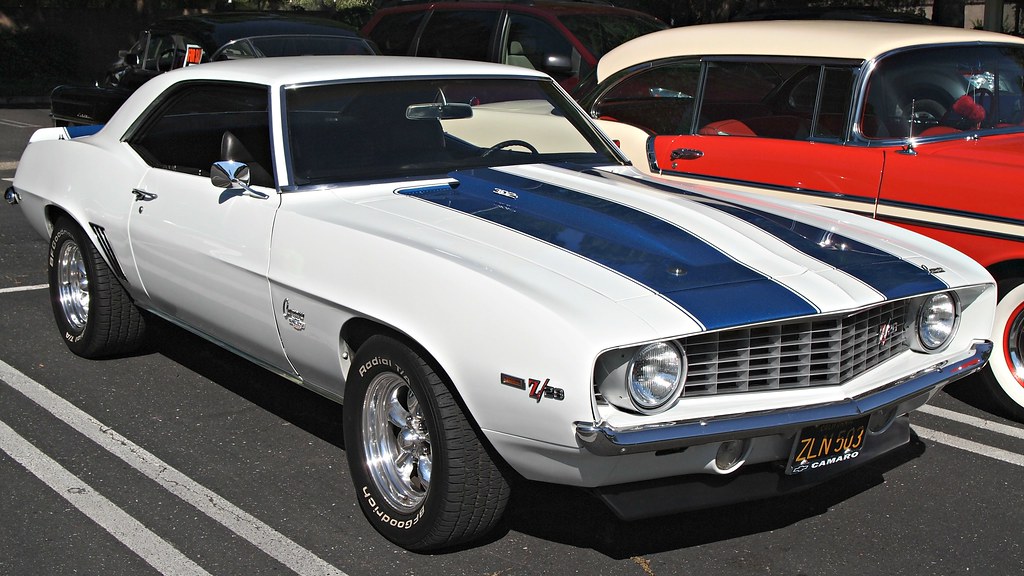
6. **Chevrolet Camaro**Like its muscle car brethren, the Chevrolet Camaro has an indelible link to aggressive driving and a reputation for attracting those with a “need for speed.” This vehicle, with its iconic design and powerful engine, often finds itself lumped into the same category as the Mustang and Charger when it comes to notorious driver behavior.
The Camaro’s high total loss rate is a red flag, suggesting that it’s involved in more severe crashes than the average vehicle. While the Insurance Institute for Highway Safety hasn’t directly confirmed crash involvement linked solely to driver behavior, the car’s reputation for high-speed incidents persists strongly in public perception and anecdotal reports.
Many owners choose to modify their Camaros for enhanced power, a decision often anecdotally tied to a riskier approach to driving. This pursuit of raw performance can translate into exhibitionist driving styles, from drag racing at stoplights to showing off at car meets. The loud engine note, while a thrilling soundtrack for the driver, often serves as an auditory warning to other motorists of impending aggressive maneuvers.
The stereotype of the Camaro driver is someone who enjoys pushing the vehicle to its limits, often on public roads. This can manifest as sudden accelerations, aggressive lane changes, and a general air of challenging other drivers. It’s a car that, for many, screams “muscle car ego,” even if the majority of owners drive responsibly.
Ultimately, the Camaro’s powerful image and performance capabilities seem to trigger a desire in some drivers to demonstrate that power, sometimes at the expense of road safety and the comfort of others. It’s a car that evokes strong reactions, and unfortunately, those reactions are often rooted in frustrating or dangerous encounters with drivers who prioritize showing off over safe driving practices.
Alright, road warriors, if you thought those first six were a handful, buckle up! We’re not done yet. As we delve deeper, we’re shifting gears a bit. While the last batch was all about the overt aggressors, this next set focuses on vehicles whose drivers bring a different kind of challenge to our daily commutes—think frustratingly oblivious moves, entitled maneuvers, and habits that just make you scratch your head. These aren’t necessarily the speed demons, but they’re certainly the ones who make you wonder if they’re even on the same planet, let alone the same road!
Car Model Information: 2018 Chevrolet Camaro 1LS
Name: Chevrolet Camaro
Manufacturer: Chevrolet
Production: 1966–2002,2009–2023
ModelYears: 1967–2002,2010–2024
Class: Pony car
BodyStyle: coupe,convertible
Platform: GM F platform,GM Zeta platform,GM Alpha platform
Layout: Front-engine, rear-wheel-drive layout
Categories: 1970s cars, 1980s cars, 1990s cars, 2+2 coupés, 2000s cars
Summary: The Chevrolet Camaro is a mid-size American automobile manufactured by Chevrolet, classified as a pony car. It first went on sale on September 29, 1966, for the 1967 model year and was designed to compete with the Ford Mustang. The Camaro shared its platform and major components with the Firebird, produced by General Motors’ Pontiac division that was also introduced for the 1967 model year.
Four distinct generations of the Camaro were developed before production ended in 2002. The nameplate was revived on a concept car that evolved into the fifth-generation Camaro; production started on March 16, 2009.
Production of the sixth generation of the Camaro ended in December 2023, for the 2024 model year.
Get more information about: Chevrolet Camaro
Buying a high-performing used car >>>
Brand: Chevrolet Model: Camaro
Price: $19,125 Mileage: 69,196 mi.
Read more about: 14 Classic Rides That Boomers Loved But Millennials and Gen Z Just Can’t Stand: Unpacking Why These Iconic Cars Fail to Appeal Now
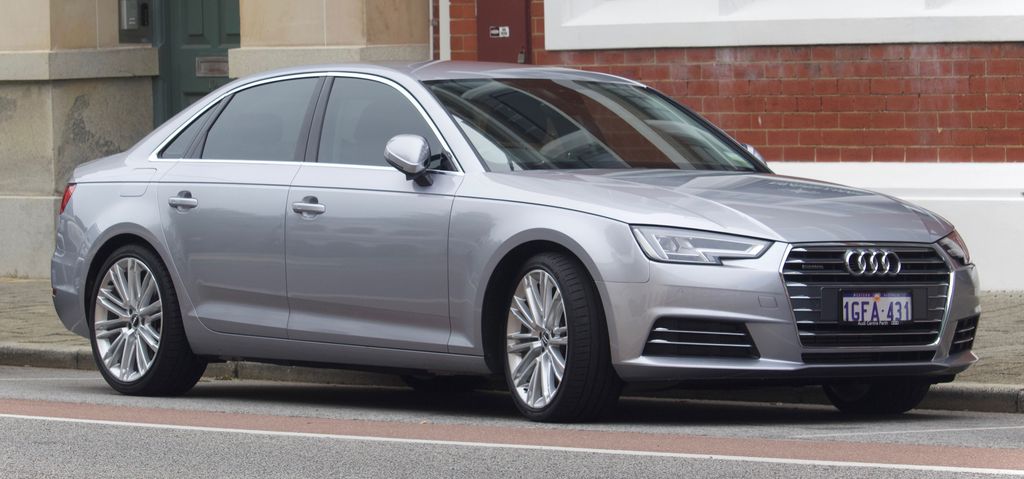
7. **Audi A4**The Audi A4, a sleek sedan that often exudes an aura of understated luxury, surprisingly holds a prominent spot on our list, not for outright reckless driving, but for a pervasive sense of impatience and discourtesy. Drivers of the Audi A4 are notorious for receiving “rude behavior citations” at a rate of 45.4 per 1,000, according to Insurify data, which is significantly above the average. This isn’t about excessive speeding or crash involvement as much as it is about the subtle, yet infuriating, acts of road negligence.
It seems that A4 drivers have a knack for cutting people off, treating lane markings more as suggestions than rules, and generally exhibiting discourteous road habits that can quickly fuel tension in traffic. Many observers note a propensity for tailgating, often riding the bumper of the car ahead regardless of its size, and yet these drivers are also stereotyped as a “sensitive bunch who lean on the horns when triggered.” It’s a fascinating paradox of being both the instigator and the easily annoyed.
This blend of impatience and a quick trigger finger suggests an entitled approach to road space. When an A4 driver barrels past you only to brake suddenly, or weaves through traffic with an almost mythical aversion to turn signals, it’s not just a minor annoyance; it’s a disruption to the flow and safety of everyone around them. They’re often perceived as luxury car drivers who are always in a hurry, regardless of the actual traffic conditions.
Ultimately, the Audi A4, much like its German counterparts, has become shorthand for a driver who believes their time is inherently more valuable than yours. While the car itself is a stylish and capable machine, its drivers are frequently seen as prioritizing their own immediate progress over basic road etiquette and the comfort of fellow motorists, making every encounter a potential source of shared road frustration.
Car Model Information: 2015 Audi A4 2.0T Premium
Name: Audi A4
Caption: Audi A4 (B9.5; facelift)
Manufacturer: Audi AG
Production: 1994–2025
Assembly: Germany,India,China,Indonesia,Ukraine
Class: Compact executive car
BodyStyle: Sedan (car)
Platform: Volkswagen Group B platform
Layout: Front-engine, front-wheel drive layout
Sp: uk
Predecessor: Audi 80
Successor: Audi A5#Third generation (2024)
Categories: 2000s cars, 2010s cars, 2020s cars, All-wheel-drive vehicles, All articles lacking reliable references
Summary: The Audi A4 is a line of luxury compact executive cars produced from 1994 to 2025 by the German car manufacturer Audi, a subsidiary of the Volkswagen Group. The A4 has been built in five generations and is based on the Volkswagen Group B platform. The first generation A4 succeeded the Audi 80. The automaker’s internal numbering treats the A4 as a continuation of the Audi 80 lineage, with the initial A4 designated as the B5-series, followed by the B6, B7, B8, and the B9.
The B8 and B9 versions of the A4 are built on the Volkswagen Group MLB platform shared with several models and brands across the Volkswagen Group. The Audi A4 automobile layout consists of a front-engine design, with transaxle-type transmissions mounted at the rear of the engine. The cars are front-wheel drive, or on some models, “quattro” all-wheel drive. The A4 is available as a sedan and station wagon. Historically, the second (B6) and third generations (B7) of the A4 also included a convertible version. For the B8 and B9 versions, the convertible, along with a new coupé and 5-door liftback variant, was spun-off by Audi into a new nameplate called the Audi A5.
The B9 generation A4 and A5 will be replaced by B10 version of A5, as part of Audi’s new naming convention.
Get more information about: Audi A4
Buying a high-performing used car >>>
Brand: Audi Model: A4
Price: $11,379 Mileage: 98,606 mi.
Read more about: Beyond the Pitch: David Beckham’s Coveted 1o-Car Collection — A Masterclass in Automotive Luxury and Style
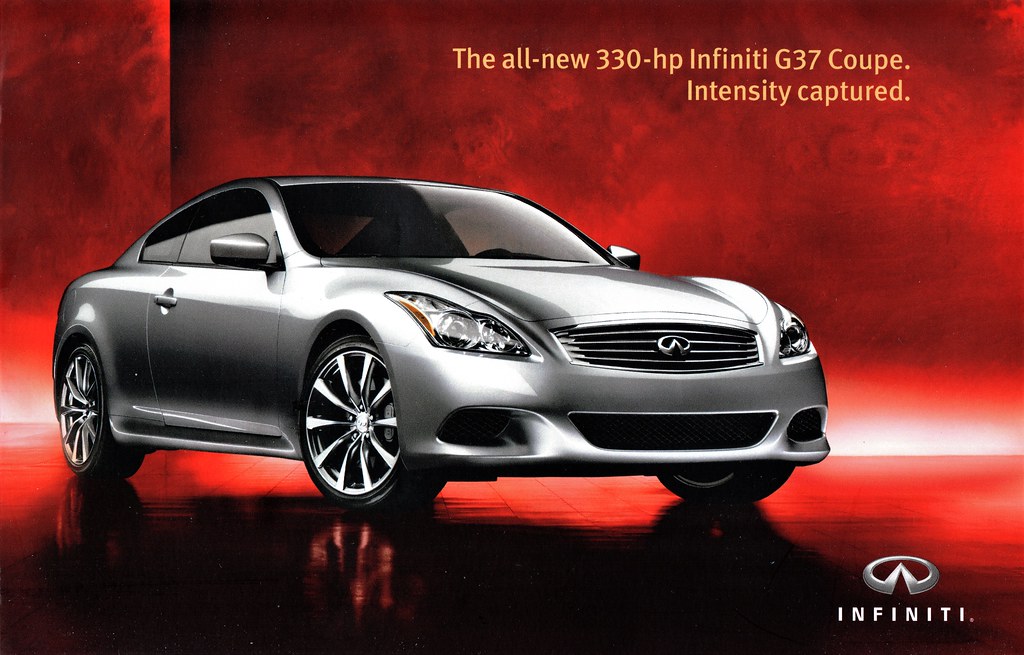
8. **Infiniti G37**When it comes to the Infiniti G37, luxury and performance meet a rather unsettling driver stereotype: the thrill-seeker who often pushes boundaries a little too far. While the car itself boasts a sporty V6 engine and a rear-wheel-drive setup that certainly appeals to enthusiasts, this combination, in the wrong hands, tends to translate into behaviors that land it firmly on lists tracking high-speed violations.
Insurify reports that a notable 10.7% of G37 drivers have speeding violations on their record, a statistic that underlines a consistent pattern of drivers who are eager to test the limits of both their vehicle and local speed limits. This isn’t just about enjoying a spirited drive; it often veers into the territory of aggressive overtaking and dangerous lane changes, where the thrill of speed takes precedence over road safety.
Anecdotal reports from major highways, such as I-580 West, frequently link the Infiniti G37 to accidents where vehicles are “spun off the road because they thought they were badass weaving through traffic at 100+ mph.” This paints a vivid picture of a driver who believes their luxury sports sedan grants them a special privilege to disregard standard road rules and common sense, often with severe consequences.
The “luxury doesn’t always equal restraint” adage perfectly encapsulates the G37 driver. While the car promises a refined driving experience, its owners, particularly in states like Hawaii, Rhode Island, and Vermont, have notably higher incident rates. These drivers seem to equate the car’s premium status with an entitled freedom to drive as aggressively as they please, leaving a trail of exasperated and often endangered motorists in their wake.
Car Model Information: 2013 INFINITI G37 Journey
Name: Infiniti G
Caption: 2012 Infiniti G37 (V36, Germany)
Manufacturer: Nissan
Aka: Nissan Primera
Production: 1990–1996,1998–2016
Class: Compact executive car
Layout: Front-engine, front-wheel-drive
Successor: Infiniti Q50
Categories: 2010s cars, All-wheel-drive vehicles, Articles with short description, CS1 errors: bare URL, CS1 errors: missing title
Summary: The Infiniti G Line is a series of compact executive cars manufactured and marketed by Infiniti, a luxury division of Nissan, for the 1991–1996 and 1999–2016 model years — across four generations.
The first two generations of the Infiniti G (P10 and P11) were sedans based on the Nissan Primera. Beginning with its third generation (V35), the Infiniti G have been rebadged versions of the Nissan Skyline line of sedans and coupes that were exported to the United States and Canada. The fourth generation (V36) introduced the hardtop coupe convertible. The Nissan FM platform, used with the third and fourth generations (V35 and V36) of the Infiniti G, also underpins the Nissan 370Z and has shared components with the Infiniti M, Infiniti EX, and Infiniti FX.
Infiniti established a new naming convention beginning with the 2014 model year; all passenger cars are designated by the letter “Q,” while sport-utility model names begin with “QX.” The Infiniti G was to have been replaced by the Infiniti Q50, but the G37 was revived as the Q40 beginning with the 2015 model year.
Get more information about: Infiniti G Line
Buying a high-performing used car >>>
Brand: Infiniti Model: G37
Price: $8,992 Mileage: 133,210 mi.
Read more about: Beyond the Billions: Unveiling Mark Zuckerberg’s 14 Most Intriguing Car Choices, From Hypercars to Humble Hatchbacks

9. **Mercedes-Benz C-Class**Ah, the Mercedes-Benz C-Class. It’s a car that screams sophistication and success, but for many on the road, it also whispers “entitlement” and “arrogance.” While the C-Class is undeniably a finely engineered luxury vehicle, several major insurers have noted that its drivers have higher-than-average accident claim rates, a statistic often attributed to a mix of youthful luxury buyers and the car’s potent turbocharged engines.
This isn’t just about speed; it’s about a perceived air of superiority that some C-Class drivers exude behind the wheel. They are frequently accused of cutting people off without a second thought, parking their pristine vehicles wherever it suits them (often occupying multiple spots), and generally being inconsiderate to other road users. It’s the kind of behavior that makes you roll your eyes and wonder if they believe traffic laws are merely suggestions for the less affluent.
The model is particularly flagged in areas like Southern California, where it shows up in data for red-light violations and rear-end collisions. These incidents suggest not just a disregard for rules, but also a lack of attention or an overly confident assumption that others will yield. It’s as if the C-Class driver often operates under the assumption that the road, and indeed the world, revolves around their immediate needs.
Ultimately, the Mercedes-Benz C-Class has, for many, become another symbol of the “luxury car ego.” While it’s unfair to paint all owners with the same brush, the stereotype persists: these are drivers who prioritize their own convenience and perceived status over courtesy and safety. They’re the ones who will make you sigh, not with fear, but with a deep, existential road-weariness at their self-centered antics.
Read more about: Decoding the Dream: 14 Affordable Classic Cars That Are a Joy to Own and Maintain for Every Enthusiast
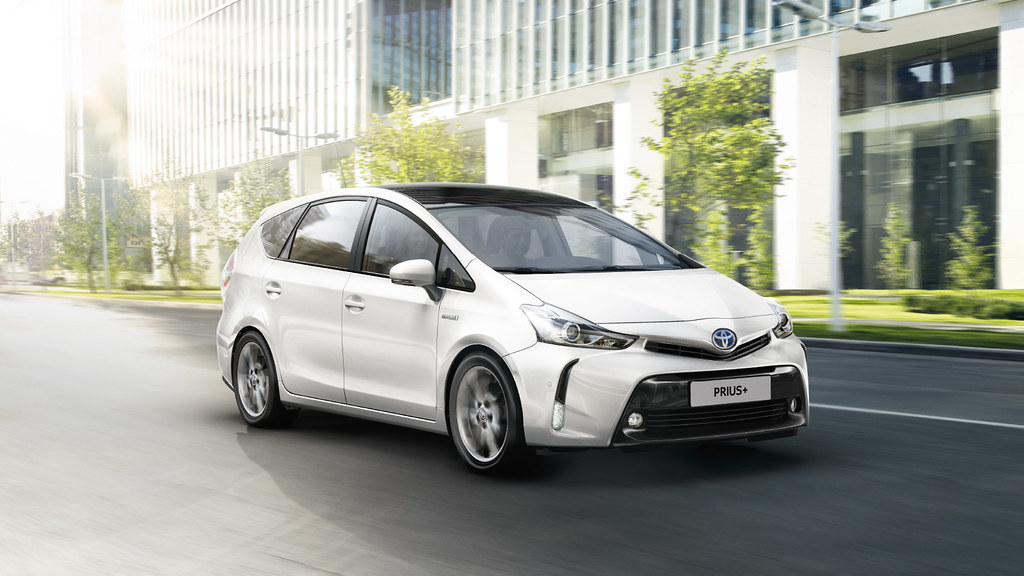
10. **Toyota Prius**Switching gears dramatically from luxury to eco-chic, we arrive at the Toyota Prius. Now, you might be thinking, “The Prius? Those drivers are just trying to save the planet!” And while that might be true, their eco-conscious driving often translates into a profoundly frustrating experience for everyone else on the road. This hybrid has become infamous for cultivating a specific “oblivious driver” vibe.
Prius drivers are often stereotyped as masters of slow, hesitant driving. While they routinely appear on lists for having the fewest traffic violations (likely because they’re not speeding or engaging in risky overtakes), this doesn’t mean they’re good drivers. Instead, they’re often accused of clogging up fast lanes, inexplicably braking unnecessarily, and making random stops in the middle of the road without warning.
Many motorists lament the Prius driver’s seemingly innate ability to “fade into your lane for no discernible reason” or to fumble with their phones, presumably handling their next Uber Eats delivery, while simultaneously being a “poster car for ‘bad drivers never miss their exit’” – often at the last, most inconvenient moment. It’s a driving style that screams absent-mindedness, even if it’s not malicious.
The Prius has earned a special place in the hearts of frustrated commuters, particularly on winding mountain roads where owners are known to “hog mountain roads and refuse to pull over for the mile-long line of cars behind them.” While the car itself is a marvel of efficiency and reliability, its drivers have cemented its image as the face of maddeningly slow, oblivious commutes. The Prius may save gas, but it absolutely does not save patience on the road.
Car Model Information: 2015 Toyota Prius Two
Name: Toyota Prius
Caption: Fifth generation Prius (XW60)
Manufacturer: Toyota
Production: December 1997 – present
ModelYears: 2001–present (US)
Class: ubl
BodyStyle: unbulleted list
Layout: unbulleted list
Sp: uk
Categories: 2000s cars, 2010s cars, 2020s cars, All-wheel-drive vehicles, All Wikipedia articles in need of updating
Summary: The Toyota Prius ( PREE-əss) (Japanese: トヨタ・プリウス, Hepburn: Toyota Puriusu) is a compact/small family liftback (supermini/subcompact sedan until 2003) produced by Toyota. The Prius has a hybrid drivetrain, which combines an internal combustion engine and an electric motor. Initially offered as a four-door sedan, it has been produced only as a five-door liftback since 2003.
The Prius was developed by Toyota to be the “car for the 21st century”; it was the first mass-produced hybrid vehicle, first going on sale in Japan in 1997 at all four Toyota Japan dealership chains, and subsequently introduced worldwide in 2000.
In 2011, Toyota expanded the Prius family to include the Prius v, an MPV, and the Prius c, a subcompact hatchback. The production version of the Prius plug-in hybrid was released in 2012. The second generation of the plug-in variant, the Prius Prime, was released in the U.S. in November 2016. The Prius family totaled global cumulative sales of 6.1 million units in January 2017, representing 61% of the 10 million hybrids sold worldwide by Toyota since 1997. Toyota sells the Prius in over 90 markets, with Japan and the United States being its largest markets.
Get more information about: Toyota Prius
Buying a high-performing used car >>>
Brand: Toyota Model: Prius
Price: $8,995 Mileage: 139,989 mi.
Read more about: The Automotive Hall of Shame: 15 Infamous Rides and Their Reputations for Bad Drivers and Dangerous Flaws
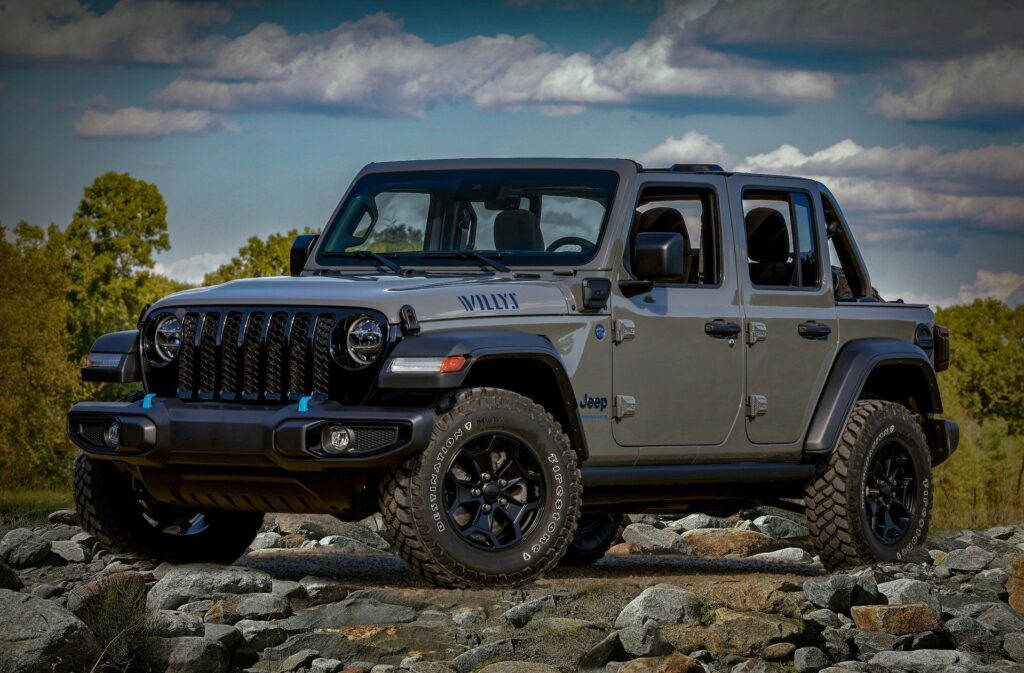
11. **Jeep Wrangler**The Jeep Wrangler. It’s a rugged, adventurous icon that evokes images of off-road prowess and freedom. However, on paved roads, this go-anywhere attitude often translates into a distinct “lack of road manners” that can be incredibly frustrating for fellow motorists. The vehicle’s design and its cult following sometimes inspire drivers to treat public streets like their own personal off-road trails.
Wrangler drivers are frequently criticized for behaviors like lane drifting, which can be exacerbated by oversized tires and lifted suspensions that aren’t always stable at highway speeds. This creates a driving experience that, while perhaps carefree for the driver, can be decidedly careless and unpredictable for everyone else around them. It’s almost as if the spirit of the wild trail follows them onto the tarmac, where it’s far less appropriate.
The stereotype of the “mall crawler” often comes to mind – a Wrangler kept meticulously clean, never seeing dirt, but whose driver still embodies that rugged, almost indifferent, approach to road rules. This perception of “carefree—but careless—driving habits” often means that observing a Wrangler on the highway can trigger a sense of caution, anticipating unexpected swerves or a general disregard for lane discipline.
Ultimately, the Jeep Wrangler’s powerful image for adventure and rugged individualism can unfortunately translate into a perception of entitled and oblivious driving on everyday roads. While many owners drive responsibly, the actions of those who embrace a ‘public road as my playground’ mentality contribute to a widespread sentiment that Wrangler drivers, while perhaps having a blast themselves, often leave a trail of exasperated motorists in their wake.
Car Model Information: 2017 Jeep Wrangler Unlimited Sport
Name: Jeep Wrangler
Caption: Jeep Wrangler Unlimited, Sahara edition
Manufacturer: Jeep
Class: Compact SUV
Production: 1986–present
Predecessor: Jeep CJ
Layout: Front-engine, rear-wheel-drive layout,rear-wheel drive
Chassis: Body-on-frame
Related: AIL Storm
Categories: 1980s cars, 1990s cars, 2000s cars, 2010s cars, All-wheel-drive vehicles
Summary: The Jeep Wrangler is a series of compact and mid-size four-wheel drive off-road SUVs manufactured by Jeep since 1986, and currently in its fourth generation. The Wrangler JL, the most recent generation, was unveiled in late 2017 and is produced at Jeep’s Toledo Complex.
The Wrangler is a direct progression from the World War II Jeep, through the CJ (Civilian Jeeps) produced by Willys, Kaiser-Jeep, and American Motors Corporation (AMC) from the mid-1940s through the 1980s. Although neither AMC nor Chrysler (after it purchased AMC in 1987) have claimed that the Wrangler was a direct descendant of the original military model — both the CJ Jeeps and the conceptually consistent Wrangler, with their solid axles and open top, have been called the Jeep model as central to Jeep’s brand identity as the rear-engine 911 is to Porsche.
Similar to the Willys MB and the CJ Jeeps before it, all Wrangler models continue to use a separate body and frame, rigid live axles both front and rear, a tapering nose design with flared fenders, a fold-flat windshield and can be driven without doors. Also, with few exceptions, they have part-time four-wheel drive systems, with the choice of high and low gearing, and standard open bodies with removable hard or soft tops. However, the Wrangler series was specifically redesigned to be safer and more comfortable on-road, to attract more daily drivers, by upgrading its suspension, drivetrain, and interior, compared to the CJ line. The suspension on all Wranglers included trackbars and anti-roll bars, and, from the 1997 TJ onwards, front and rear coil springs instead of the previous leaf springs.
From 2004 on, the Wrangler has been complemented with long-wheelbase versions, called Wrangler Unlimited. 2004-2006 models were longer versions with 2 doors. In 2004 only automatic transmission-equipped “Unlimited” versions were sold. In 2005 both an automatic and manual 6-speed (NSG-370) were offered. Since 2007, the long-wheelbase Wranglers were four-door models, offering over 20 in (508 mm) more room. By mid-2017 the four-door models represented three-quarters of all new Wranglers on the market.
Get more information about: Jeep Wrangler
Buying a high-performing used car >>>
Brand: Jeep Model: Wrangler
Price: $20,725 Mileage: 111,103 mi.
Read more about: 12 Cars That Made Drivers Say ‘Nope, Not Again!’ – Your Ultimate Guide to Avoiding Instant Regret on Wheels
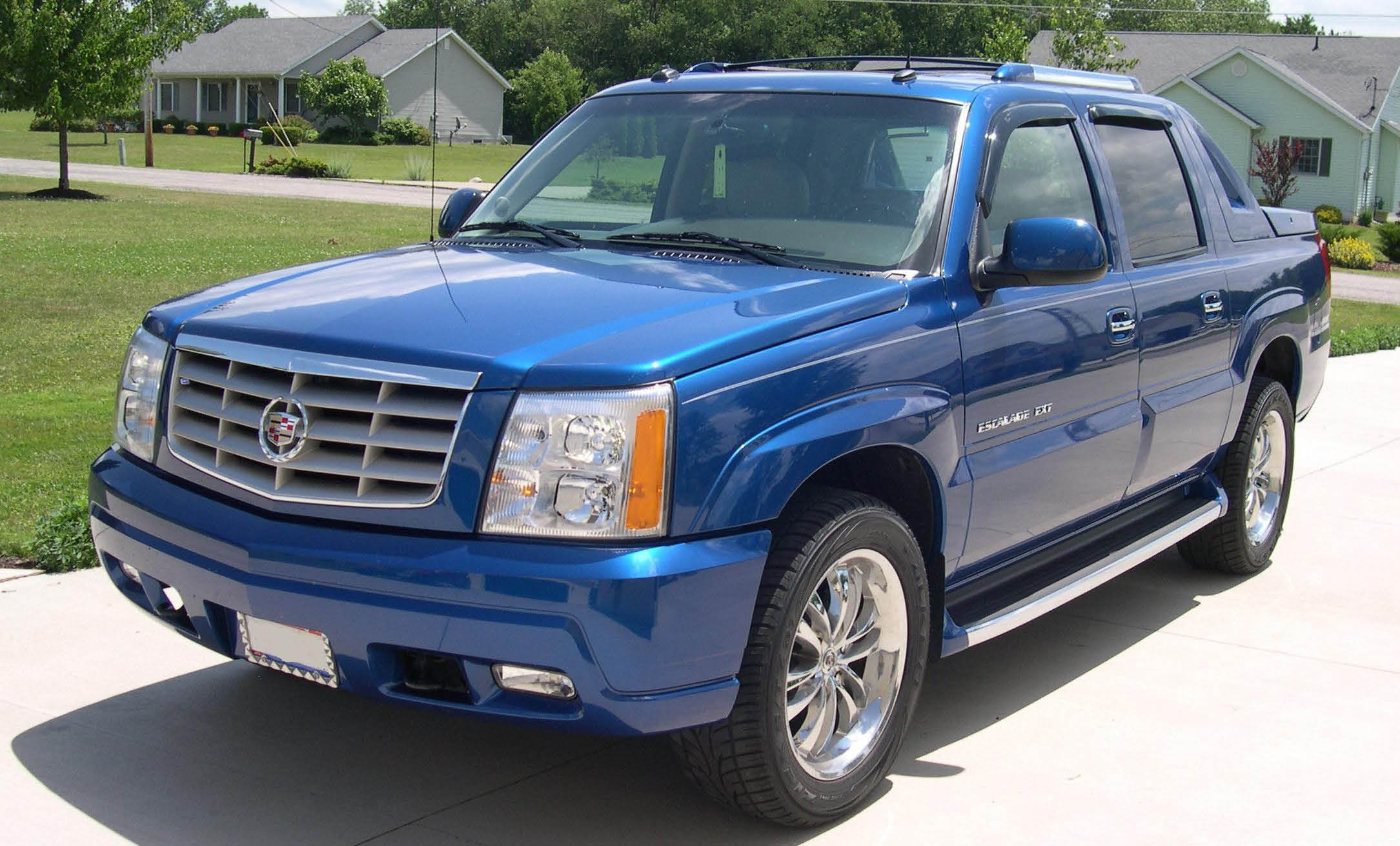
12. **Cadillac Escalade**If there’s one vehicle that embodies the phrase “throwing their weight around” on the road, it’s the Cadillac Escalade. This full-size luxury SUV is an absolute beast, and while it’s a symbol of success for many, it also carries a heavy burden of stereotypes associated with entitled and intimidating driver vibes. Detractors frequently point out that these SUVs are “unnecessarily big and have more power than most people need.”
The sheer presence of an Escalade on the road, particularly in urban and suburban environments, often gives off “leader-of-the-pack vibes.” Drivers of these monumental machines are known for, shall we say, a certain assertiveness that borders on aggression, often with “little to no regard for smaller cars.” It’s a kind of automotive dominance that can feel less like confident driving and more like an unspoken declaration of road ownership.
The stereotypes associated with Escalade drivers are so numerous that, as one observer quipped, if they “had to pack all the stereotypes about them into the cargo space, they might not have enough room.” This includes everything from hogging parking spaces to tailgating with their massive grille looming large in your rearview mirror, making you feel distinctly, well, small. It’s a car that, for many, embodies the notion that prestige can sometimes bring out the worst in people.
So, while the Cadillac Escalade is a vehicle of undeniable luxury and capability, its imposing size and the perceived driving habits of some owners have cemented its reputation as a car that often creates an environment of frustration and unease for others. It’s a prime example of how some prestigious cars can trigger a sense of entitlement that translates into road behavior that’s anything but subtle or considerate.
Phew, what a ride! From the aggressive tailgaters to the frustratingly oblivious lane-hoggers, it’s clear that our roads are a melting pot of driver personalities, often tied, for better or worse, to the cars they choose. It’s fascinating how a piece of metal, rubber, and glass can take on such a strong persona, influencing not just how we see the car, but how we judge the person behind the wheel. While we all know it’s the human element that truly matters, these stereotypes stick around for a reason, shaped by countless shared experiences on the asphalt jungle.
Car Model Information: 2021 Cadillac Escalade Sport
Name: Cadillac Escalade
Caption: Fifth generation Cadillac Escalade
Manufacturer: Cadillac
Production: 1998–present,2002–present (ESV),2001–2013 (EXT),2008–2013 (Hybrid)
ModelYears: 1999–2000,2002–present
Class: Full-size,luxury car,sport utility vehicle
Related: ubl
Layout: Front-engine, rear-wheel drive layout,Front-engine, four-wheel drive layout
Categories: 2000s cars, 2010s cars, 2020s cars, All-wheel-drive vehicles, All Wikipedia articles in need of updating
Summary: The Cadillac Escalade is a full-size luxury SUV manufactured by General Motors and marketed by Cadillac as its first major entry into the SUV market. The Escalade was introduced for the 1999 model year in response to an influx of new luxury SUVs in the late 1990s including the Mercedes-Benz M-Class, Range Rover, Lexus LX, and Ford’s 1998 debut of the Lincoln Navigator. The Escalade project went into production only ten months after it was approved. The Escalade is built in Arlington, Texas.
The term “escalade” refers to a siege warfare tactic of scaling defensive walls or ramparts with the aid of ladders or siege towers. More generally, it is a French word which is the noun-equivalent form of the French verb escalader, which means “to climb or scale”.
The Escalade is currently sold in North America and select international markets (Europe and Asia) where Cadillac has official sales channels. The Escalade ESV (Escalade Stretch Vehicle) is sold in North America, Russia, and the Middle East, but is only available by special order in some international markets. The right-hand-drive Escalade and Escalade ESV are available through third-party conversion specialists without official agreement with Cadillac in Australian, Oceanic, and Japanese markets.
On August 8, 2023, GM presented the Escalade IQ, an all-electric version of the Escalade, and the third model in Cadillac’s EV line, after the Celestiq, and Lyriq. It is expected to go on sale in late 2024 for the 2025 model year, with a starting price of $130,000.
The Escalade has gone through five generations, the most recent (the fifth) prsented in 2021, noted for its technology and self-driving capability. The fifth generation Escalade is nearly two metres high, and was criticized by The Verge for its excessive size and hazard to pedestrians.
Get more information about: Cadillac Escalade
Buying a high-performing used car >>>
Brand: Cadillac Model: Escalade
Price: $62,850 Mileage: 58,494 mi.
Read more about: 12 Cars That Made Drivers Say ‘Nope, Not Again!’ – Your Ultimate Guide to Avoiding Instant Regret on Wheels
Whether you nod along in agreement or vigorously shake your head, one thing is certain: these “driver vibes” are a real part of our collective driving consciousness. They shape our perceptions, influence our reactions, and sometimes, just sometimes, make us wish we had a remote control to politely (or not-so-politely) adjust someone else’s driving habits. So, the next time you spot one of these notorious rides, you might just find yourself bracing for the inevitable – because on the road, some reputations truly do precede them. Stay safe out there, and happy (and hopefully less frustrating) motoring!

